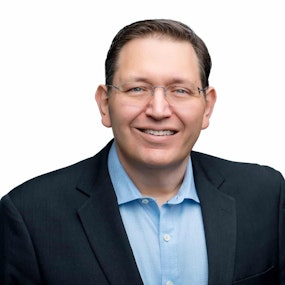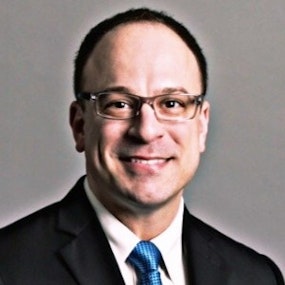ROBERT JOHNSON:
This is Public Health Review Morning Edition for Tuesday, March 14th, 2023. I'm Robert Johnson. Now, today's news from the Association of State and Territorial Health Officials.
BRIAN CASTRUCCI:
I think that study tells us that we are standing on a very weak foundation.
JOHNSON:
Dr. Brian Castrucci is President and CEO of the de Beaumont Foundation. He's talking about data from the Public Health Workforce Interests and Needs Survey (PH WINS) that showed how many workers plan to leave or retire from public health. Castrucci teamed with ASTHO CEO Mike Fraser and others to write an article about their findings in the current issue of Health Affairs. It examines the ongoing exodus of state and local public health employees.
CASTRUCCI:
There are two things that we need in public health to be successful, we need better trust, and more people. And what we found was that we lost people throughout the pandemic, and we were already at a deficit. So, we already needed 80,000 more full-time employees (FTEs) to just do the basic foundational public health services, and now we're finding that throughout this pandemic, half the workforce left their jobs.
JOHNSON:
Castrucci says the trendline isn't good. Projecting nearly 130,000 staff could leave their jobs by 2025.
CASTRUCCI:
It's an asteroid headed for the earth. You can just watch it, or you can try to do something about it. And the CDC is investment of $3.2 billion is trying to do something about it, but we need better unity amongst our governors. We can't have some states attacking public health while some states are building it up. We are only going to be as safe as a nation as the state that invests the least in public health.
JOHNSON:
You can read the article using the link in the show notes. Also, there's a lot more to the conversation with Dr. Castrucci. We've got that for you later this week on Morning Edition.
Record investment in public health infrastructure certainly will allow many public health agencies to upgrade technology. ASTHO's Public Health TechXpo is a great opportunity to learn more. J.T. Lane is the organization's Senior Vice President for Population Health and Innovation. We spent some time recently talking with him about the upcoming event. Here's that conversation.
JOHNSON:
We're talking about TechXpo. It's coming up soon in Chicago. It's a hybrid event this year. What is exciting about this year's event in your mind?
J.T. LANE:
Well, I think first of all, this event is where the future of public health was happening in the country. Innovation, public service keeping American families protected, all in how we do our jobs more effectively and efficiently in creating a more modern public health workforce infrastructure, modernizing our data systems. This is the meeting where that's happening. We're having all sorts of experts, many attendees, I think we expect more attendees at this meeting that we have in the history of ASTHO events, from both the public sector, the private sector, global organizations, national organizations, government, nonprofits. It's going to be quite the mix of experts and organizations that we need to modernize, think differently about how we come out of this global event in a much different way. And ask them tough questions, have some good debates about how we do that.
JOHNSON:
This is not a trade show. This is much more than that?
LANE:
Absolutely not. We obviously have sponsoring organizations, corporate partners that provide services both to CDC, HHS, our members, of course. Those also vendors that are innovating, who've learned from the pandemic, creating new products that could potentially have a good impact on how we track the health of the population and protect American families from threats.
Again, it's been 100 years since we had a pandemic from this last one. We don't know when the next one will be, but we want to use this as event and these new relationships and partnerships to be ready for the next one. Public health has got to get have a closer partnership with the private sector. We can do that. And we can do that with ease. We have to put the right guardrails in place, of course, but public private partnerships for us going forward are essential to modernizing state and local, tribal, territorial public health.
JOHNSON:
And there's a lot to talk about, including all of this money that's now pouring into infrastructure. It's an historic opportunity, and you're going to take it up at this conference.
LANE:
We are we're actually starting the conference with the infrastructure grantees. That's 107 jurisdictions representing the US states territories DC and the largest urban areas, both counties and cities in the country represents, like I said, 107 jurisdictions, and we're going to bring them together. Talk about their plans for the next five years on what they're going to do to spend those resources in the most effective way, how states will be working with local governments to make sure that local needs are met. And so that's gonna go on for a day and a half, and then we kick off the larger event on midday Tuesday, May 24th.
JOHNSON:
If I'm sitting out there in public health somewhere right now, and I'm thinking about whether or not I should go to Chicago or join online, what is the best argument in your view for registering to this conference and being there in person and May?
LANE:
Well, I think that we're emerging from the pandemic still, and I think there's a lot of uncertainty about what a modern infrastructure, workforce and data systems ecosystem looks like. We've answered some questions, but there's still some questions we've yet to answer. So I'd say the biggest reason to come to listen in virtually is to start filling in those gaps and get those answers because that's exactly the kind of form we're trying to create. We want to be about solutions and results. We know that the stakes are big for public health, and we've got hundreds of 1000s of very committed public health professionals all across this country that are doing the very best they can and what we need to do is make sure we use this as a venue to create an ecosystem for them to work most effectively, and to improve health equity and improve overall system performance.
JOHNSON:
You can get more information about ASTHO's Public Health TechXpo using the link in the show notes.
Also today, people living with disabilities are helping emergency planners in Ohio. O'Keyla Cooper has more.
O’KEYLA COOPER:
The Ohio Department of Health with support from ASTHO launched a project to involve Ohioans with disabilities. The project identified opportunities to develop public health preparedness plans that better meet the requirements of people with access and functional needs. Ohioans from a variety of racial, cultural, socio economic and ability backgrounds were involved in the project. Read the full blog using the link found in the show notes.
JOHNSON:
Finally this morning, stay ahead of every public health policy decision in Congress and state capitals across the country with ASTHO's legislative alert emails, you can sign up using the link in the show notes.
That'll do it for today's newscast. We're back tomorrow morning with more ASTHO news and information. I'm Robert Johnson. You're listening to Public Health Review Morning Edition. Have a great day.






